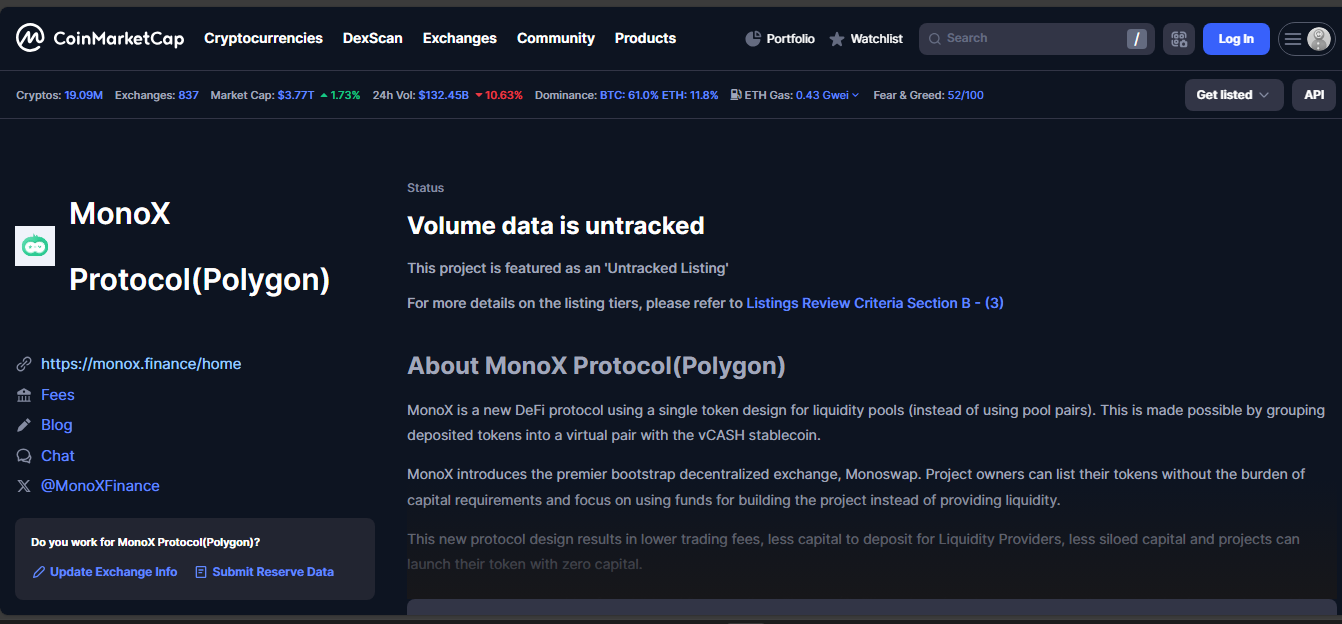MonoX Protocol (Polygon) - Exchange Review

Quick overview
MonoX Protocol launched Monoswap on Ethereum and Polygon in late 2021. It aims to eliminate paired liquidity pools by using vCASH virtual pairing. That means users deposit a single token and get liquidity access. The idea is efficient, low-cost DeFi swapping.
Token and design
The MONO token has a total supply around 22 million and a circulating supply near 7.8 million. That design supports single-sided liquidity: trades against vCASH rather than pair tokens. This lowers capital requirements, reduces spread, and lets projects launch tokens without upfront liquidity commitments.
Market activity
Volume is effectively zero across tracked platforms. CoinMarketCap shows no real trading and no tracked market pairs. The model is live, but hardly any users trade. Liquidity pools are nearly empty or inactive.
Security and risks
MonoX suffered a major hack on November 30, 2021 - about 31 million dollars was lost across Ethereum and Polygon due to a Monoswap vulnerability. The protocol relies fully on smart contracts, and governance or vetting remains minimal. Legal status is unclear given its DAO-like structure and lack of formal oversight.
User experience
There is no account registration. You connect a Polygon-compatible wallet and swap via the Monoswap interface. No order books, just liquidity pools. But since pools lack depth, slippage is high and transactions may not fill. Farming yields exist where liquidity is present, but total value locked is negligible. The interface is simple, but the ecosystem feels empty.
Token trends and outlook
MONO trades near 0.0003 dollars or less. Forecasts range from modest gains to bearish projections. Some models target around 0.00052 to 0.00065 by 2025 to 2030, but growth hinges on securing liquidity and trust.
Summary status
Final notes
MonoX Protocol on Polygon offers a clever twist: single-token liquidity and easier listing with vCASH. But clever doesn’t always mean functional. This model might reduce friction - but where there is no user activity, it’s just a concept.
The platform lacks liquidity, trading volume, and user traction. The hack damage still looms in memory. Trust is minimal. Participation remains niche and speculative.
If you’re drawn by innovation, MonoX is intriguing. If you need real markets and depth - it falls flat. It’s part experiment, part blueprint - but not a live exchange in any real sense.
Disclaimer
“This content is for informational purposes only and does not constitute financial advice. Please do your own research before investing.”
.png)







%203.svg)
%203.svg)




















